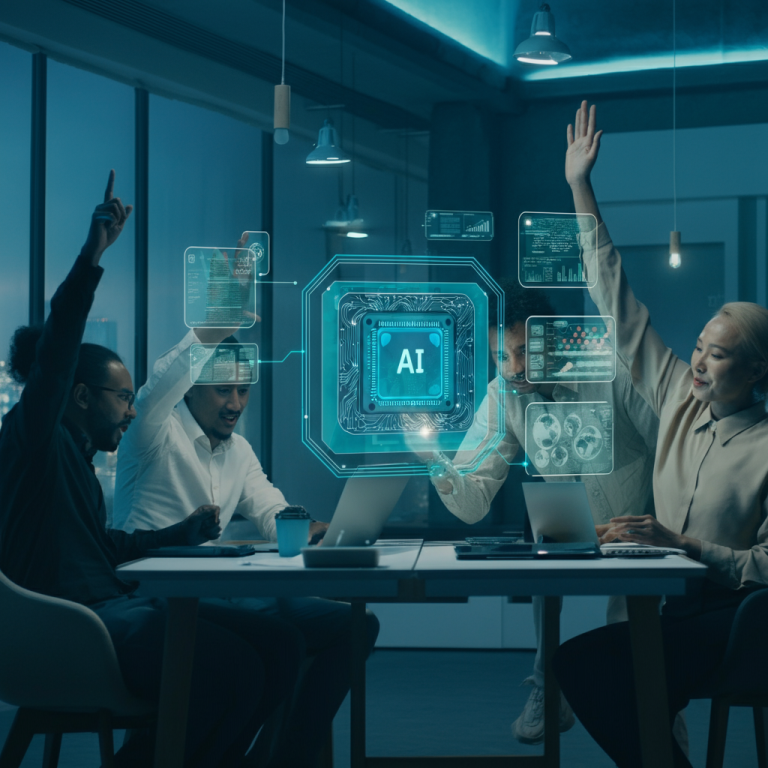Generative AI, a subset of artificial intelligence that creates new data from existing data sets, has been a game-changer in various industries. It has transformed the way we create art and music, revolutionized healthcare diagnostics, and brought about new possibilities in finance. However, as this technology becomes more prevalent, it is crucial to ensure that generative AI is secure AI. With the potential for misuse and malicious intent, it is essential to take proactive steps to protect the integrity and security of generative AI systems. In this article, we will delve into five steps to make sure generative AI is secure AI.
Step 1: Implement Robust Authentication and Authorization Mechanisms
One of the first steps in ensuring secure generative AI is to implement robust authentication and authorization mechanisms. Authentication is the process of verifying the identity of users, while authorization involves granting them appropriate access privileges.
In the context of generative AI, this means ensuring that only authorized individuals can access and interact with the AI models. By implementing strong authentication mechanisms, such as multi-factor authentication and biometric authentication, organizations can prevent unauthorized access to generative AI systems. Multi-factor authentication requires users to provide two or more verification factors to gain access, while biometric authentication uses unique biological characteristics, like fingerprints or facial recognition, to verify identity.
Additionally, implementing fine-grained authorization controls ensures that only authorized individuals can modify or interact with the AI models. This can be achieved by setting up role-based access controls, where different roles are assigned different levels of access and permissions. This way, organizations can ensure that users only have access to the information and functions necessary for their role, minimizing the risk of unauthorized access or modification of the AI models.
Step 2: Regularly Update and Patch AI Systems
Just like any other software, generative AI systems are vulnerable to security vulnerabilities. To ensure secure AI, it is crucial to regularly update and patch these systems. This includes staying up to date with the latest security patches and fixes provided by the AI system vendors.
Security patches are software updates that fix vulnerabilities in the system. By promptly applying these updates, organizations can mitigate the risk of potential security breaches and protect their generative AI systems from emerging threats. Regularly updating and patching AI systems also ensures that they are equipped with the latest features and improvements, enhancing their performance and reliability.
Step 3: Conduct Regular Security Audits and Penetration Testing
To ensure the security of generative AI systems, organizations should conduct regular security audits and penetration testing. Security audits involve a systematic evaluation of the system’s security, assessing how well it conforms to a set of established criteria. This helps identify vulnerabilities and weaknesses in the AI systems, allowing organizations to address them before they can be exploited by malicious actors.
Penetration testing, on the other hand, involves simulating real-world attacks to test the resilience of the AI systems. This proactive approach helps organizations identify and fix security flaws, ensuring the overall security of the AI systems. By regularly conducting security audits and penetration testing, organizations can stay one step ahead of potential threats and ensure the ongoing security of their generative AI systems.
Step 4: Implement Data Privacy and Protection Measures
Generative AI systems often rely on large amounts of data to train and generate models. It is crucial to implement robust data privacy and protection measures to ensure the security of this data. This includes encrypting sensitive data, implementing access controls, and regularly monitoring data access and usage.
Data encryption involves converting data into a code to prevent unauthorized access. By encrypting sensitive data, organizations can ensure that even if the data is intercepted, it cannot be read without the decryption key. Implementing access controls, as discussed earlier, can also help prevent unauthorized access to data.
Regularly monitoring data access and usage can help organizations detect any unusual or suspicious activity. This can be achieved through the use of data monitoring tools, which track and record data access and usage, alerting organizations to any potential security breaches.
Step 5: Foster a Culture of Security Awareness and Training
Lastly, to ensure secure generative AI, organizations must foster a culture of security awareness and training. This involves educating employees about the potential risks and best practices for using generative AI systems securely. By providing regular security training and promoting a culture of vigilance, organizations can empower their employees to identify and report potential security threats.
Additionally, organizations should establish clear policies and guidelines for the secure use of generative AI systems. These policies should outline the responsibilities of different stakeholders, the procedures for reporting security incidents, and the consequences of non-compliance. By making security a top priority for all stakeholders, organizations can ensure that everyone plays a part in maintaining the security of the generative AI systems.
Conclusion
Generative AI has the potential to revolutionize various industries, but it is crucial to ensure that it is secure AI. By implementing robust authentication and authorization mechanisms, regularly updating and patching AI systems, conducting security audits and penetration testing, implementing data privacy and protection measures, and fostering a culture of security awareness and training, organizations can make sure that generative AI is secure AI. By taking these proactive steps, we can harness the power of generative AI while mitigating the risks associated with its use. The future of generative AI is promising, but it is up to us to ensure that it is a secure and safe technology for all.










